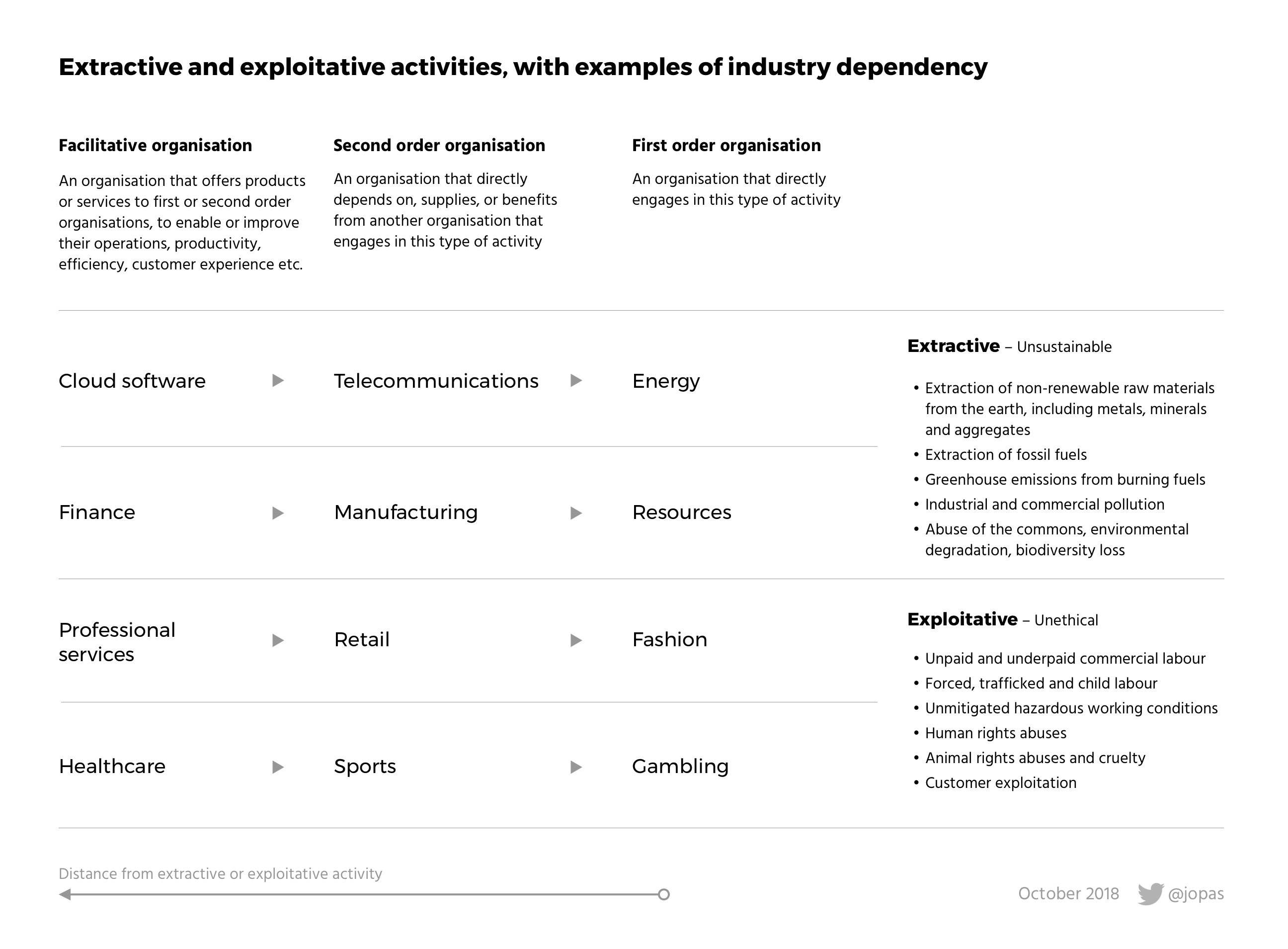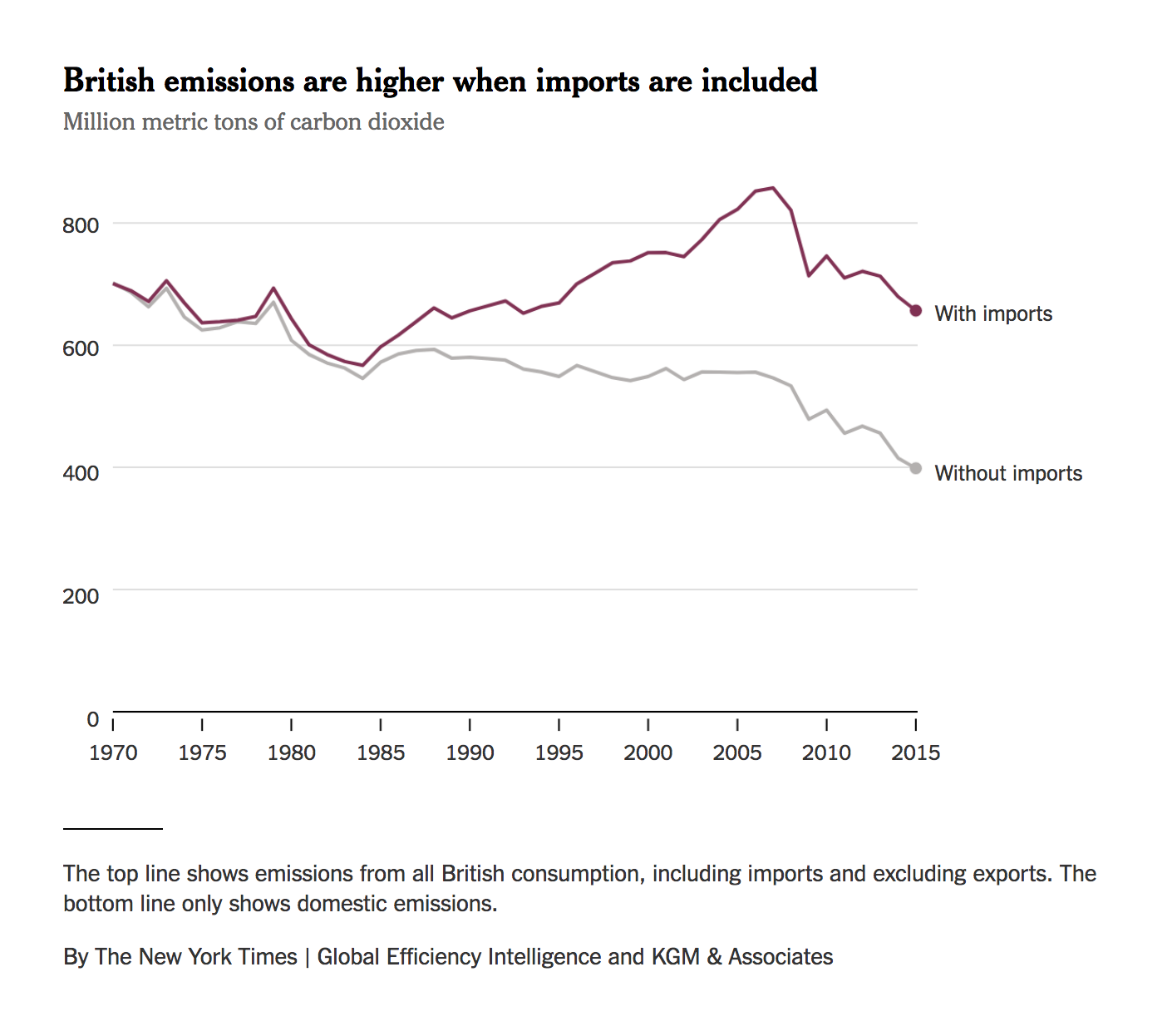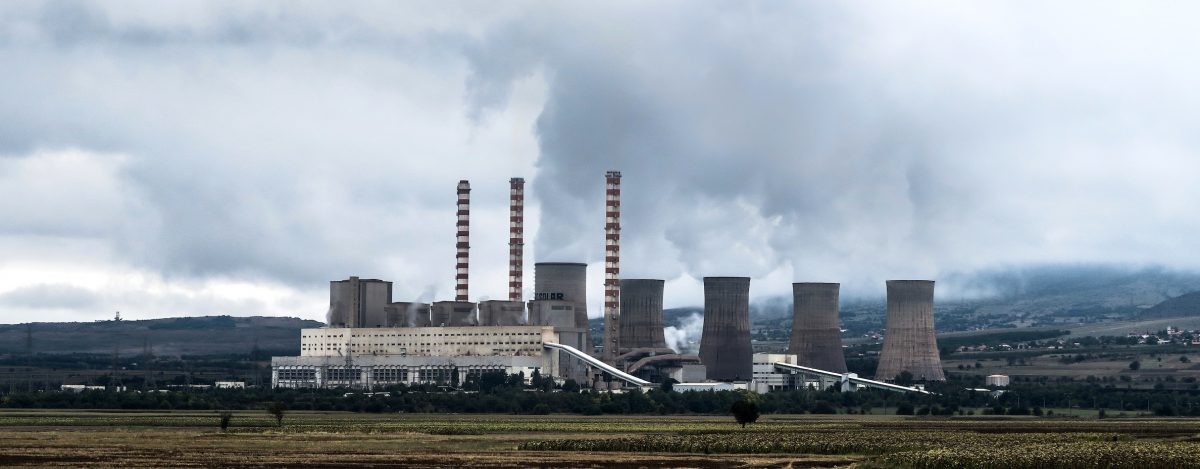One core feature of globalised capitalism is that supply and demand, production and consumption are geographically separated. Consumers buying physical products have very little visibility into the supply chain and the participating organisations beyond the maker (the public brand) and the seller (the place of purchase). As consumers, we tend to stick with the story crafted by marketing and advertising, and assessing the sustainability of a product beyond this superficial understanding is a challenge we are not encouraged to take on.
Table of Contents
What is sustainability
The Wikipedia definition of sustainability is as follows:
Sustainability is the process of maintaining change in a balanced fashion, in which the exploitation of resources, the direction of investments, the orientation of technological development and institutional change are all in harmony and enhance both current and future potential to meet human needs and aspirations. (Wikipedia)
This view is extremely human-centred and techno-capitalistic, and focuses solely on human needs and aspirations. The rest of nature are reduced to mere resources, placed at our disposal to exploit.
An alternative definition of sustainability is offered by John R. Ehrenfeld, former executive director of the International Society for Industrial Ecology and the author of the books Flourishing (2013) and Sustainability by Design (2008):
Sustainability is the possibility that humans and other life will flourish on the planet forever (Ehrenfeld, 2008)
This view of sustainability has some major implications. It means that anything we do today that hinders the possibility or reduces the opportunity space for us and other lifeforms to flourish in the future, is by definition unsustainable. Because it reduces the breadth of potential futures, this type of activity can also be called defuturing.
Today, what most businesses do in the name of the environment really amounts to an effort to reduce unsustainability (Ehrenfeld, 2006). Whilst this can be better than nothing, a mere reduction does not make an operation sustainable, and is often designed to distract consumers from investigating the deeper problems. Greenwashing and many ‘ethical’ or ‘organic’ products are common examples of this.
Extractive and exploitative activities in industrial production
Let’s have a more detailed look at some of the problems with production. The three basic factors of production are natural resources, labour, and capital.
The use of natural resources often involves some of the following extractive activities:
- Extraction of non-renewable raw materials from the earth, including metals, minerals and aggregates
- Extraction of fossil fuels
- Greenhouse emissions from burning fuels
- Industrial and commercial pollution
- Abuse of the commons, environmental degradation, biodiversity loss
Extractive activities are, by their very definition, unsustainable.
Notes: This list above is not exhaustive. For simplicity, emissions have been grouped under extractive activities. Depending on your perspective, emissions, pollution, abuse of the commons, environmental degradation and biodiversity loss could all be categorised as both extractive and exploitative. Also, ‘renewable’ energy sources such as biofuels have their own complexities, which are not discussed here.
Let’s look at labour next. Work, especially when done at a distant part of the supply chain at a faraway location, can involve some of the following exploitative activities:
- Unpaid and underpaid commercial labour
- Forced, trafficked and child labour
- Unmitigated hazardous working conditions
- Human rights abuses
- Animal rights abuses
Some industries also exploit their customers: addiction (alcohol, drugs, tobacco, some games), gambling, predatory credit, perhaps some cosmetic plastic surgery, and so on.
Exploitative activities are, by their very definition, unethical. These activities can also be considered unsustainable as they work against the long-term flourishing of certain groups of people or other natural life.
Note: I am aware that these two categories may be read as reinforcing the classic duality of human vs. nature, which places humans separate to nature, and depicts nature as ‘other’. That is not my intent.
Unsustainability, a problem as wicked as they come
The third factor of production, capital, is a story for another day. Just one salient point: the built-in profit motive that is core to capitalism means that the system ‘naturally’ reorganises towards the cheap, in every interaction. This means that there is always an incentive for a race to the bottom, which in turn fuels extractive and exploitative activities.
A wicked problem is a social or cultural problem that is difficult or impossible to solve for as many as four reasons: incomplete or contradictory knowledge, the number of people and opinions involved, the large economic burden, and the interconnected nature of these problems with other problems. (Source: AC4D)
There is a complex interrelated network of structural causes and effects that contribute to the wicked problem of unsustainability. I won’t go into further detail here but themes like patriarchy, individualism, dispossession, financialisation, colonisation, oppression, racism and structural inequality all have a part to play. Let’s call these systemic problems.
The following table is an attempt to illustrate a very high-level view of the supply chain using four simplified examples of interdependent industries. To make these examples more realistic, you can replace each industry with an actual company name.

Moving from left to right, the distance from the core extractive or exploitative activity increases:
- First order organisation: An organisation that directly engages in this type of activity
- Second order organisation: An organisation that directly depends on, supplies, or benefits from another organisation that engages in this type of activity
- Facilitative organisation: An organisation that offers products or services to first or second order organisations, to enable or improve their operations, productivity, efficiency, customer experience etc.
The further away you are from the core extractive or exploitative activities, the easier it is to claim ‘sustainable’ or ‘ethical’ operation. The trouble is, your operation still depends on, supplies, or benefits from these unsustainable or unethical activities by proxy.
Embodied emissions and fractal supply chains
As well as the emissions made from using something, every item purchased contains “embodied emissions”. Embodied emissions are all the emissions created over the entire lifecycle of the item from creation to disposal, but not including direct emissions from usage. They break down as follows: upstream emissions, manufacturing emissions, transport and sale emissions, and downstream emissions. (ABC, 2007)
Think about a basic consumer product, the chocolate bar. The following diagram from TDT Victoria shows how complex the supply chain for this deceivingly simple product is – and this is just a high-level view!

You can imagine that the global supply chain networks are infinitely complex and it is almost impossible to assess the full extent of interdependencies for all but the most basic of products.
If you count the trucks, trains and ships in the above diagram, you can see how much of the supply chain is just moving goods and materials around – this illustrates the system’s addiction to cheap energy. Every single stage of this transportation journey has its own environmental impact and emissions. Therefore, to understand the full extent of the environmental impact of even the simplest product, we would have to consider every nested supply chain that underpins each part of the product.

A recent article in the New York Times touches on this very complexity through the example of outsourced emissions. The diagram above illustrates how significant a difference it makes to either include or exclude these emissions. Measuring emissions is in part an accounting problem, and some creative accounting is being employed here to make emissions reductions look better than they really are.
Here’s another example of the complexity of supply chains:
It took Intel more than four years to understand its supply line well enough to ensure that no tantalum from the Congo was in its microprocessor products. (Anatomy of an AI System, 2018)
The more complex supply chains are, the easier it is to hide unsavoury activity in distant, invisible parts of the network. And complex they are:
The whole industrial system is embedded in the [transistor] radio (Gorz, 1994)
Although not all extractive activities result in emissions, we can use embodied emissions as a shorthand to consider the effects of these activities as they carry through the whole product lifecycle.
To build on the concept of embodied emissions, we can also consider the notion of embodied exploitation. These are the ethical breaches and abuses of people and animals that took place during the entire lifecycle of a product, across the entire supply chain network.
The unsustainability of consumer products
Sustainability is the possibility that humans and other life will flourish on the planet forever (Ehrenfeld, 2008)
Let’s consider the following two statements:
- A product is only sustainable if its entire lifecycle and complete end-to-end supply chain, including all dependencies, are sustainable
- Conversely, a product cannot be sustainable if any part of its manufacture, distribution, consumption or disposal – including all dependencies – is unsustainable.
Now, have a look around your home or your office. Everything you see is a product. Choose one of them, touch it, pick it up – certain materials were used to manufacture it. These materials were extracted somewhere, repeatedly transported somewhere else, put through various industrial processes, then delivered through the system of commerce, to you. For each of these steps, certain people were involved, either as paid or unwilling participants to the supply chain and the global industrial system.
Whichever product you’re looking at, the likelihood of every one of the hundreds or thousands of steps required to bring it to you being carbon neutral, non-extractive and non-exploitative is virtually zero.
Here’s the real kicker – now think about your job. Perhaps you’re doing an office job, or maybe you work out in the world. Given Ehrenfeld’s definition, how many of the tasks you do on a daily basis can be considered sustainable? What about the solutions and outcomes you create, and the clients and customers you serve – can their operations be considered sustainable? What about their clients and customers? And the chain continues.
We are all trapped in a system we no longer control.
The system is unsustainable to its very core.
Let’s start afresh and imagine a better system.
No problem can be solved by the same kind of thinking that created it (Einstein)
References
- Hero image: Agios Dimitrios Power Plant in Katerini, Greece by Jason Blackeye
- Wikipedia: Sustainability
- John Ehrenfeld (2008): Sustainability by Design
- John R. Ehrenfeld (2006): Feeding the Beast
- AC4D: Wicked Problems
- ABC (2007): Embodied emissions and energy
- TDT Victoria (Transport & Distribution Industry Training Board): The Right Move
- The New York Times (2018): You’ve Heard of Outsourced Jobs, but Outsourced Pollution? It’s Real, and Tough to Tally Up
- KGM & Associates and Global Efficiency Intelligence (2018): The Carbon Loophole in Climate Policy – Quantifying the Embodied Carbon in Traded Products
- Kate Crawford and Vladan Joler (2018): Anatomy of an AI System – The Amazon Echo as an anatomical map of human labor, data and planetary resources
- Andre Gorz (1994): Capitalism, Socialism, Ecology
All content copyright © Jussi Pasanen and respective owners, as referenced. This essay was originally written in September 2018 and published in November 2018. Thanks to everyone who reviewed versions of it.
